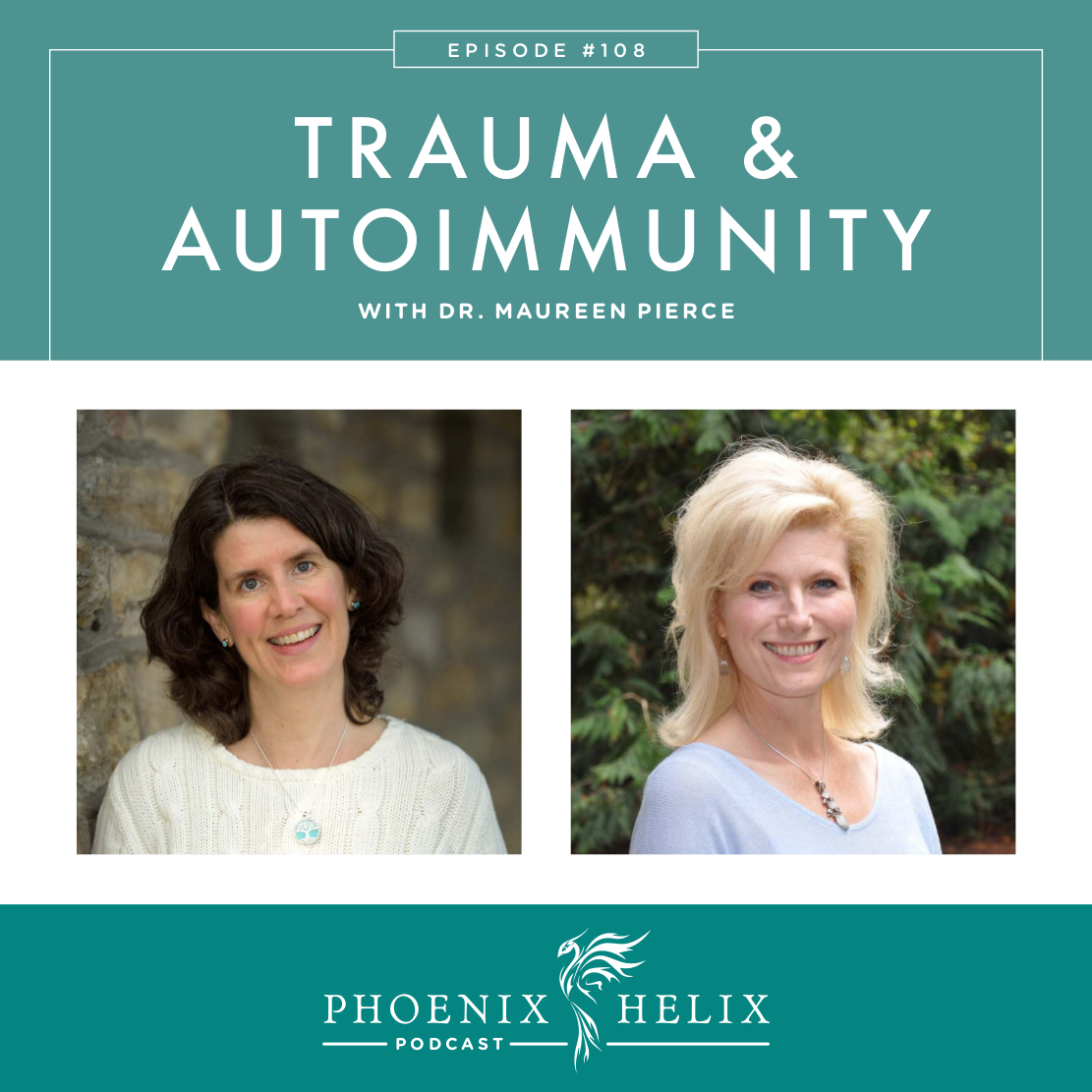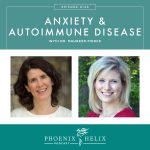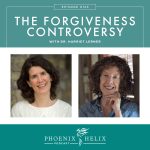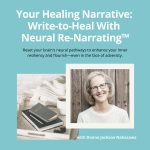The Link Between Trauma and Autoimmune Disease
People who are diagnosed with a stress-related disorder like PTSD are 30-40% more likely to be diagnosed with autoimmune disease. And when it comes to childhood trauma, children with two or more adverse childhood experiences are 70-100% more likely to be hospitalized due to autoimmune disease as adults. Also, the shock of an autoimmune diagnosis combined with life-changing symptoms can qualify as a trauma itself. I don’t share these statistics to scare anyone, but when it comes to maximizing autoimmune health, being aware of this connection is important. Thankfully, there are treatments available that can help us rebuild our health resilience. My guest today is Dr. Maureen Pierce, a health psychologist who specializes in working with people with chronic pain and chronic illness. Not surprisingly, she’s a trauma specialist as well.
Listen to the Show
- Subscribe to my podcast through your favorite podcast app: iTunes, Stitcher, Google, TuneIn, Spotify, Amazon, etc.
- You can also listen to the episode right here through the player below, and if you subscribe to my newsletter you’ll get notified of future episodes.
Podcast: Play in new window | Download
Show Notes
- Intro (0:00)
- Thank You to Our Podcast Sponsor – Paleo on the Go (1:55)
- A frozen meal delivery service, 100% of their menu is compliant with the elimination phase of the paleo autoimmune protocol (AIP). They have over 5o items, including entrees, side dishes, broth, AIP-friendly bacon, and desserts.
- Use the code PHOENIX for 10% off your first order.
- Meet Dr. Maureen Pierce (3:25)
- Dr. Pierce is a licensed psychologist who specializes in helping people with chronic pain, chronic illness, and trauma recovery. She has a private practice in Des Moines, WA (outside of Seattle), and she has a holistic approach to therapy: helping her patients address all the factors that affect mental, emotional, and physical health.
- Her first introduction to the mind-body connection came after her father’s diagnosis of lung cancer. She read Dr. Bernie Siegel’s book, Love Medicine and Miracles, and was inspired by his description of the “exceptional patient” – those who are active participants in their healthcare.
- Her PhD is in Health Psychology. Areas of special training include psychoneuroimmunology, pain psychology, and trauma recovery. She also works with first responders who are exposed to traumatic events much more frequently than the general population and often suffer health consequences as a result.
- Defining Trauma (7:59)
- Trauma is our emotional response to something deeply distressing that exceeds our ability to cope.
- “Big T Traumas” – assault, child abuse, natural disasters, torture, rape. Chronic illness can fall into this category as well.
- “Little T Traumas” – childhood or adult experiences where we feel embarrassed, hurt, or excluded.
- Trauma is cumulative – the more we are exposed to distressing events, the more likely symptoms will manifest.
- Post-Traumatic Stress Disorder (PTSD) is the formal diagnosis when symptoms are severe. Dr. Pierce prefers to call it Post-Traumatic Stress Injury, because it can be healed.
- Trauma is a subjective experience – we vary as individuals in our response to traumatic events.
- Trauma Symptoms (10:42)
- Symptoms are unique to the individual – not everyone has every symptom.
- Milder symptoms include disturbed sleep, anxiety, irritability, and tearfulness. These are symptoms that can also be caused by other things, like food intolerances, nutrient deficiencies, and hormone imbalances. A holistic approach to autoimmune health is to look at all of these potential factors, including trauma.
- More severe symptoms include intrusive thoughts, flashbacks, hypervigilance, hyperarousal to stimuli, avoidance behaviors, angry outbursts, feeling detached from others, and reckless/self-destructive behavior. This can interfere with relationships and the ability to maintain employment.
- Some people experience a delayed response, because they try to cope and carry on after the initial trauma as if everything is fine.
- Symptoms can also be cumulative. For example with chronic illness, someone may manage the diagnosis and initial symptoms very well, but experiencing a health setback might set off a trauma response.
- Childhood Trauma (15:37)
- ACE = Adverse Childhood Experience. The ACE Questionnaire outlines 10 different experiences which range from child abuse to divorce. The higher your ACE score, the higher your risk of developing chronic illness as an adult, including autoimmune disease. The first ACE study was done in the 1990’s. Since then, the results have been confirmed by other studies.
- Childhood trauma has an especially big impact because: (1) The child brain and body is still developing, and ACEs impact the brain, the immune system, and the inflammatory response. (2) ACEs also increase the likelihood of health-risk behaviors as an adult: smoking, drinking, drug use, overeating, etc. (3) Epigenetics: ACEs can change the expression of our genes.
- Resources:
- Empowerment, Resilience, and Adaptation (21:32)
- While traumatic experiences do impact our health, the story doesn’t end there. Steps we take to heal these experiences can improve our health outcomes. Dr. Pierce’s treatment philosophy incorporates:
- Empowerment = a willingness to adopt a healing mindset and take charge of our health.
- Resilience = building skills that increase our capacity to recover. These include diet, sleep, movement, supplements, and stress management, in addition to trauma therapy.
- Adaptation = learning to work with “what is.”
- While traumatic experiences do impact our health, the story doesn’t end there. Steps we take to heal these experiences can improve our health outcomes. Dr. Pierce’s treatment philosophy incorporates:
- Welcoming a New Podcast Sponsor – Buffalo Gal Grassfed Beauty (26:41)
- Buffalo tallow is nutrient-dense, rich in omega-3 fatty acids, clean-smelling, and deeply emollient. It’s a potent skincare ingredient because it closely resembles the oils in our own skin, and it can be especially helpful for people with dry, sensitive, or allergy-prone skin. As we go into winter in the Northern Hemisphere, I recommend everyone give these products a try.
- Founded by Shalley Carrell, owner of a grass-fed water buffalo farm in Georgia, they source the nutrient-dense tallow for their beauty products from their own farm. You can’t get more transparent or local than that.
- Their product line includes: tallow balms, body butters, cleansing bars, toning mists, hot oil cleanse, lip whip, toothbrushing soap, facial masks, fizzing bath balm, and more.
- They have an unscented product line (their unscented tallow and emu balm is one of my favorites).
- They also offer products infused with essential oils, and they update the scents seasonally. A popular new scent for Fall is their Pumpkin Spice Body Butter. Note: they never use artificial fragrances.
- Place an order here, and use the code PHOENIX for 10% off your first order.
- What Is CBT? (29:07)
- CBT = Cognitive Behavioral Therapy. It’s the most highly recommended treatment for trauma by the American Psychological Association. It looks at how our thoughts impact our emotions and behavior.
- ABCD Approach:
- A – What is the activating event? (The trauma)
- B – What beliefs arose from that event?
- C – What are the consequences of those beliefs – emotional, physical, and behavioral?
- D – Dispute the negative thoughts and beliefs.
- Resource: Common Cognitive Distortions (irrational beliefs).
- What is Somatic Awareness? (38:02 & 49:46)
- Somatic Awareness = tuning into the body.
- Many people with chronic illness disconnect from their body. However, trauma cannot be healed with talk therapy alone. Learning how to safely reconnect with our bodies is an important part of treatment.
- Somatic therapies Dr. Pierce uses in her practice: EMDR, Somatic Experiencing, Body Scan Meditation, Guided Imagery, and Hypnosis.
- What is EMDR? (40:19)
- EMDR = Eye Movement Desensitization and Reprocessing.
- Eye movements (or other bilateral stimulation) are used during the sessions. It’s a very specific protocol that targets one traumatic memory at a time. While there is some talking, it’s not a talk therapy. Instead, it’s a therapy designed to process the memory through both hemispheres of the brain. (Trauma is often stored in the right hemisphere only, which is the nonverbal part of the brain. The left hemisphere is essential to understanding and integrating life experiences). After successful EMDR treatment, the client still has the memory, but it no longer has the emotional charge it had prior to treatment. It’s like taking the memory from vivid color to black-and-white.
- EMDR is an 8-phase treatment, which includes preparation before the first EMDR session, follow-up after the session, and the building of life skills for self-care and self-regulation between sessions. It averages 4-6 sessions to process one memory. However, children tend to process memories faster.
- In addition to trauma treatment, EMDR can also be helpful for chronic pain and anxiety.
- Resource: EMDR Research.
- How To Find a Trauma Therapist (52:04)
- EMDR Practitioner Directory.
- Google your state psychological association. They usually have practitioner directories where you can search by specialty (such as post-traumatic stress).
- Questions to ask potential therapists:
- Do you have experience working with people with chronic health issues?
- Do you have special training in health psychology?
- Do you have advanced training in trauma therapy?
- What treatments do you use?
- For EMDR, what level of training have you completed? (Ideally, you want someone who has completed levels 1 & 2).
- Do you have an integrative approach that works on other health-supporting behaviors?
- Note: If you live in a small town and don’t have access to someone with a lot of training and experience, ask if they are they willing to learn about your condition and work with you as you build skills together.
- Outro (55:46)
- Dr. Maureen Pierce has a private practice in Des Moines, WA (outside of Seattle). She does have limited openings for new patients. You can reach her through her website.
- Eileen (your podcast host) is the author of multiple books, written to help people thrive with autoimmune disease. Learn more on the Books Page.
- If you like this podcast, follow or subscribe through your favorite podcast app. You can also subscribe to Eileen’s biweekly newsletter.
- Check out the entire archive of podcast episodes.
You May Also Be Interested In
Spreading the Word
If you like the podcast, please leave a positive review in iTunes. It would mean the world to me, and also helps others find the podcast. Here are some quick instructions using your iPhone:
- If you are already subscribed to my podcast: (1) Click the purple podcast icon. (2) At the bottom of the screen, click Library. (3) At the top of the screen, click Shows. (4) Click the Phoenix Helix podcast image. (5) Scroll down the page, and you’ll see Ratings and Reviews. Scroll down a little bit more and click on Write a Review. This will bring up the review screen. Tap 5 stars (if you love the podcast), and then click in the title box, and it will bring up the keyboard. Enter a title and short review. (6) Click Send in the upper right corner. (7) Thank you! Positive reviews give the podcast a higher search ranking in iTunes, helping people find it and letting them know it’s a quality podcast and worth their time to listen.
- If you haven’t subscribed to my podcast: (1) Click the purple podcast icon. (2) In the lower right corner, click the magnifying class. (3) Type Phoenix Helix in the search box. (4) Click the podcast cover in the Show list. (5) If you’d like to subscribe, click the + sign at the top of the screen. (6) To write a review, scroll down the page, and you’ll see Ratings and Reviews. Scroll down a little bit more and click on Write a Review. This will bring up the review screen. Tap 5 stars (if you love the podcast), and then click in the title box, and it will bring up the keyboard. Enter a title and short review. (7) Click Send in the upper right corner. (8) Thank you! Positive reviews give the podcast a higher search ranking in iTunes, helping people find it and letting them know it’s a quality podcast and worth their time to listen.








